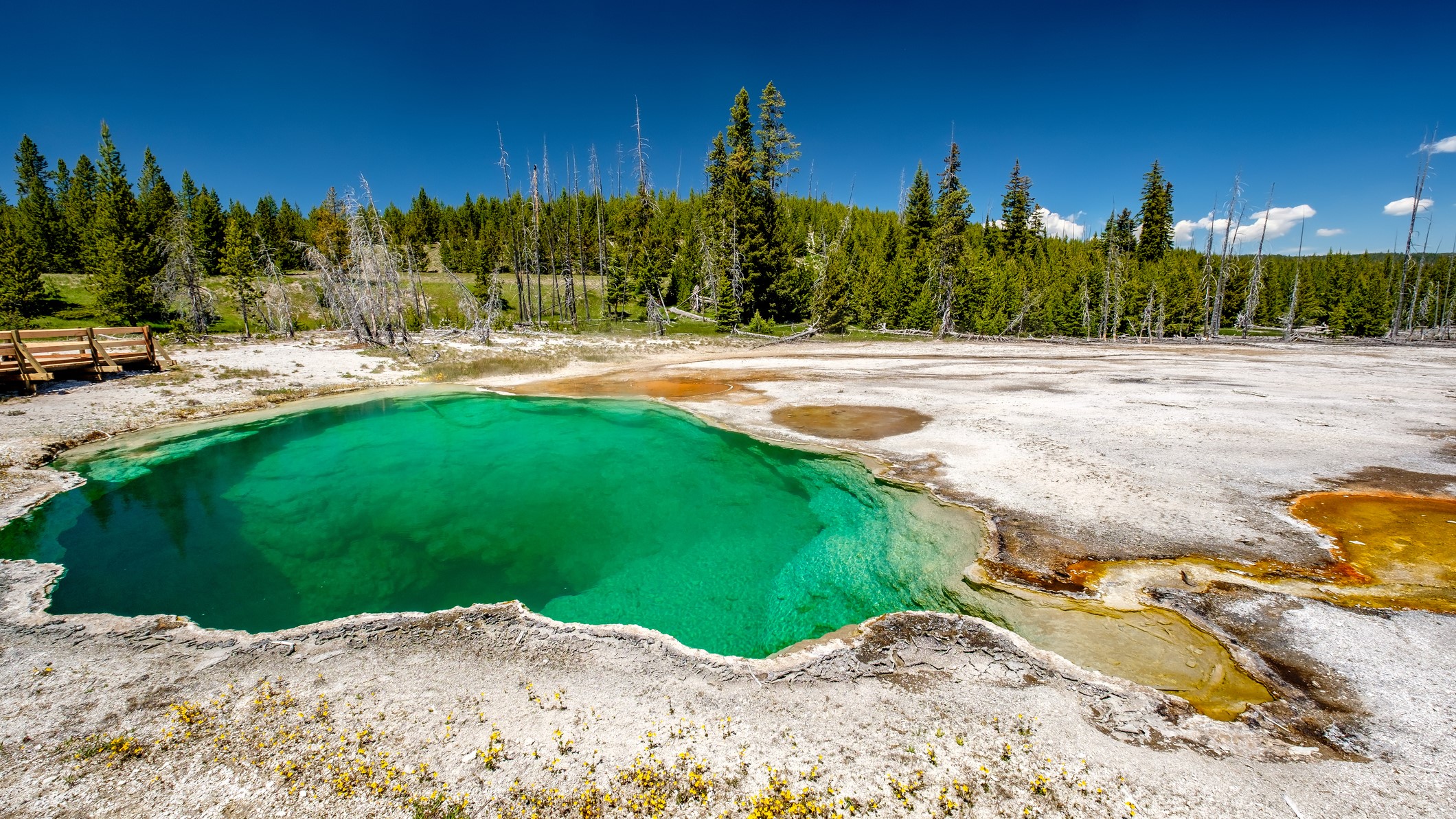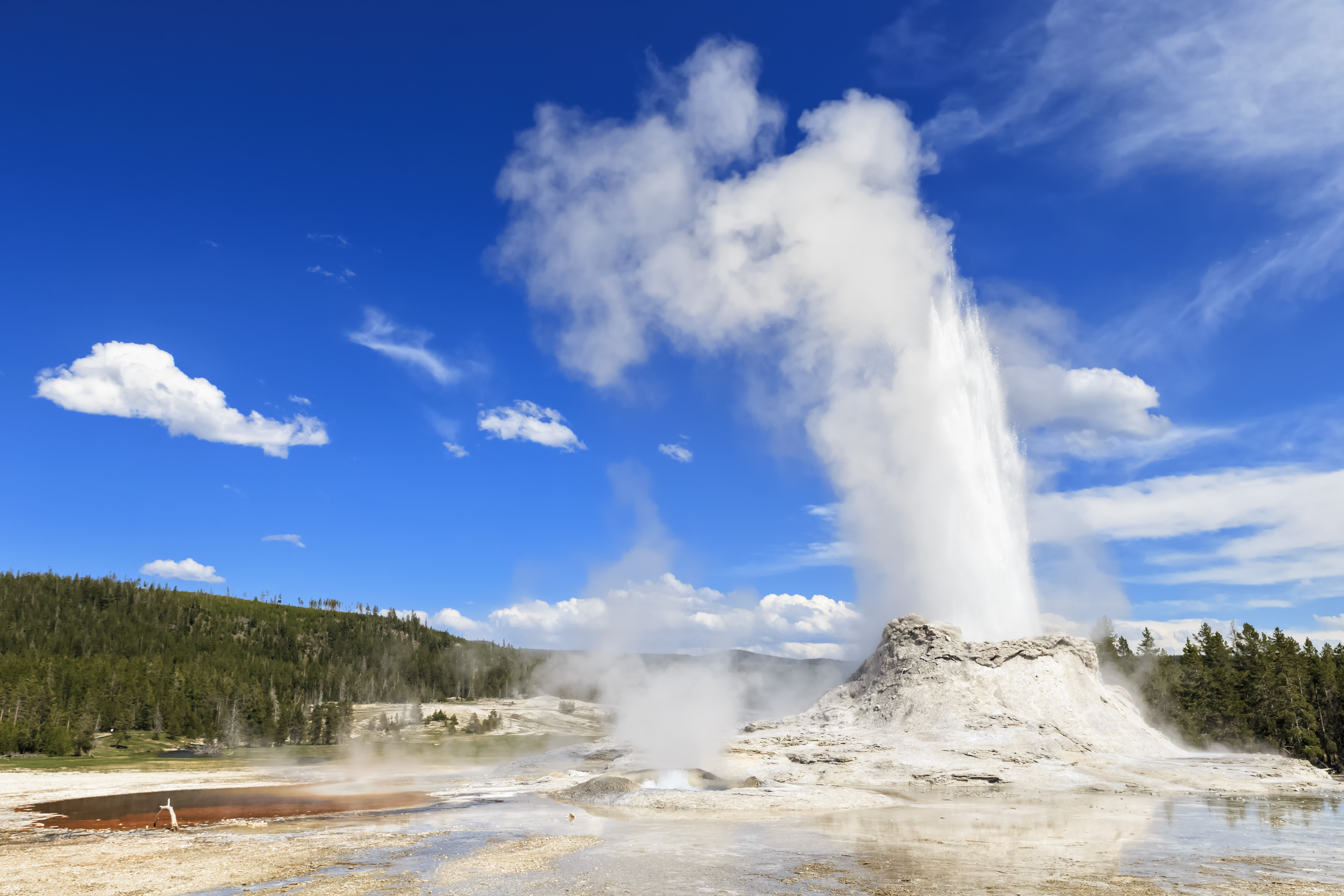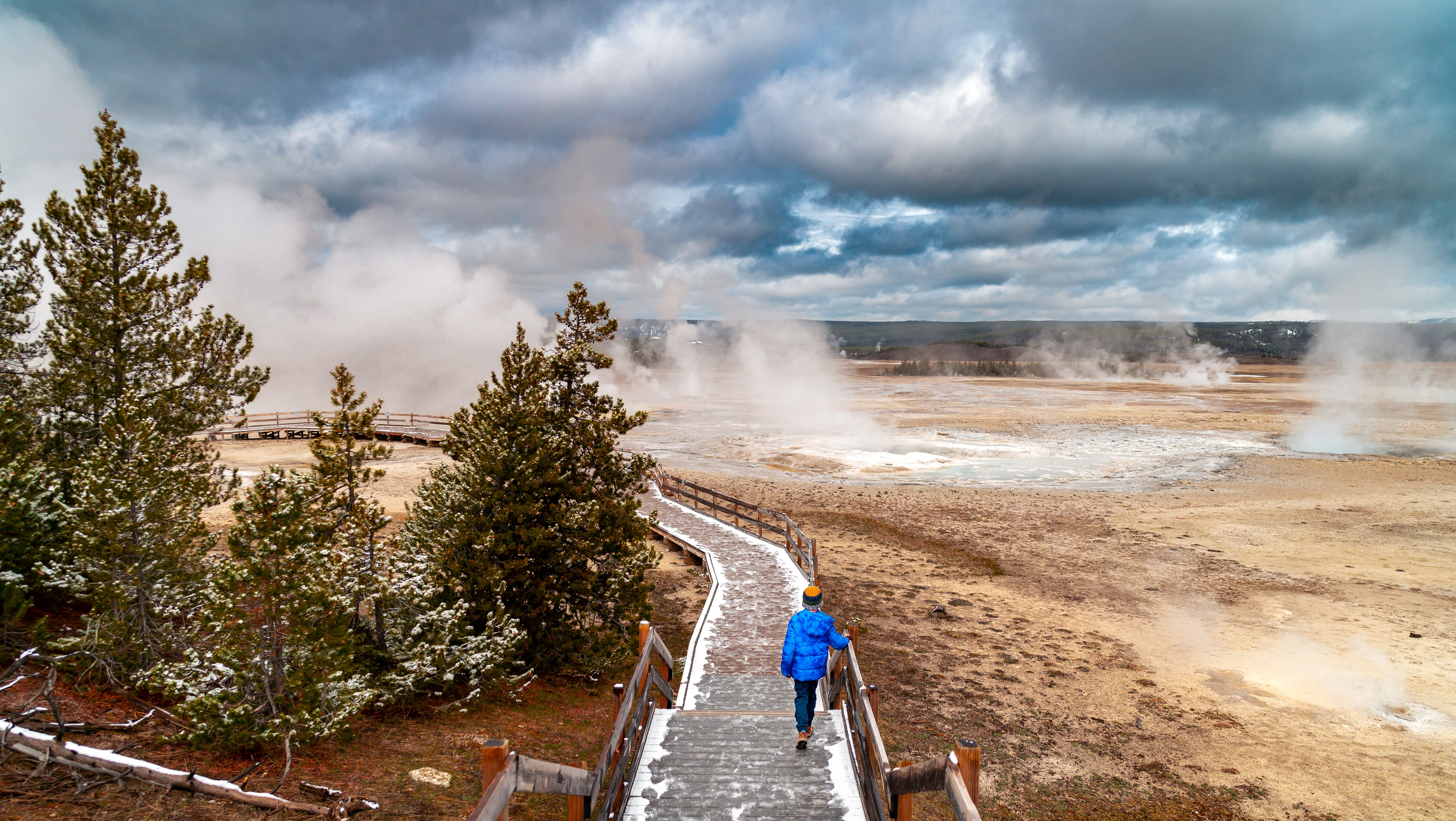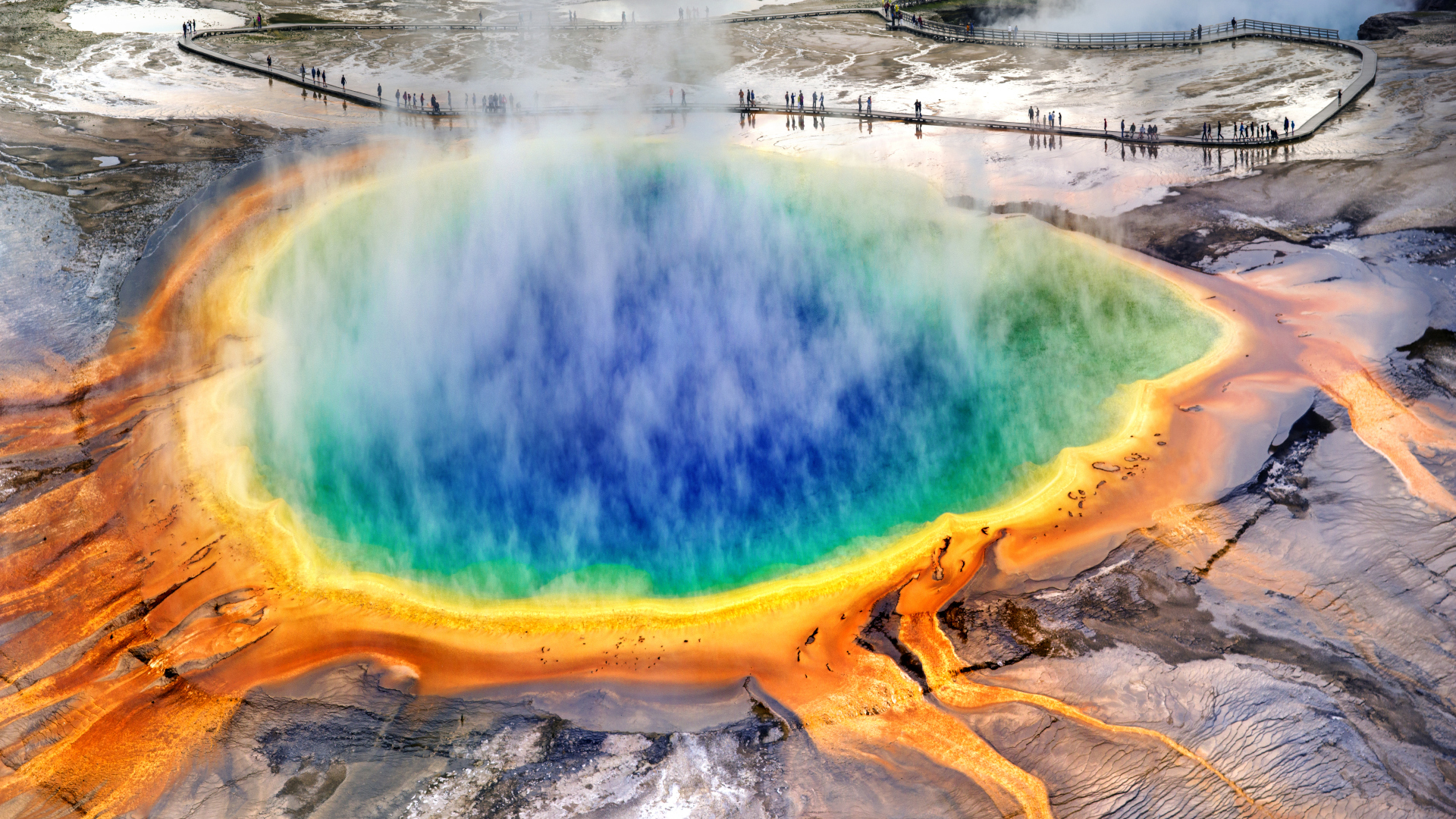
Yellowstone National Park’s hot springs are simply glorious. From the iconic Old Faithful to the tallest geyser in the world (Steamboat), these natural erupting wonders have drawn curious humans for centuries. Lately, however, it seems like those humans are getting a little too curious – and entirely too close – for comfort.
From dipping fingers in boiling pools to wandering off the boardwalk to get a better photograph, it seems like these days we’re reporting on geyser mishaps in Yellowstone about as frequently as we are on misadventures with bison. The reason is a little unclear – perhaps it’s because we all think we live in a video game nowadays, or maybe it’s because in other areas out west, hot springs are places to hike to and soak in? Whatever the reason, it appears that the time has come for a little hot springs safety lesson.

Why can't you touch Yellowstone hot springs?
A bubbling pool really might not look like that hot tub back at your cabin, but the reality is something different. Your hot tub is probably around 100°F, which feels super toasty after a long day of hiking or cross country skiing, but is actually only a degree or three warmer than your normal body temperature.
A hot spring, on the other hand, is warmed by the furnace otherwise known as the earth’s interior – if you’ve read up on Yellowstone fascinating facts, you’ll recall that the entire place is a volcano – and its hot springs achieve a scorching temperature of nearly 200°F at the source, with steam vents up to 275°F according to the US Geological Survey.
Basically, touching a Yellowstone hot spring will be very unpleasant indeed. It could leave you missing quite a bit of skin, if you’re lucky, or dead if you fall in whilst trying to dip your fingers. In fact, according to the USGS, 22 people have died due to scalding in the park’s hot springs since 1872, more than double the number that have been killed by bears and bison combined.

Hot spring safety
Though getting too close to a hot spring can result in all kinds of complications, hot spring safety is surprisingly simple. Just follow these three steps and you can visit Yellowstone National Park and probably leave in one piece.
1. Stick to the trail
If you’re visiting Yellowstone National Park, or indeed any of the other places in the world where you might go geyser hunting, the best thing you can do is stick to the designated trail. Don’t worry about what other people are doing; the trail might be a regular dirt path or a boardwalk, but whatever it looks like, make sure that your hiking boots don’t stray off it. Yellowstone’s hot springs are surrounded by a thin crust that is both extremely hot and fragile, and just because Pierce Brosnan thinks he can get away with it, doesn’t mean you can.
If you really want to get a brilliant photograph of a hot spring, you still shouldn’t stray off-piste. It’s really not worth it. For a guaranteed photo of an eruption, just head to Old Faithful, which true to its name erupts every 44 minutes so you’ll never have long to wait and won’t be tempted to stray closer to try to get a closeup.

2. Don’t touch
If the designated trail happens to take you quite close to a hot spring, great! Just don’t think that gives you carte blanche to dip a finger. Not only can you end up with serious third-degree burns, you could be in danger of falling in entirely, and while it’s possible to survive falling through ice, you’re not likely to see another day if you tumble into a hot springs. Pretty quickly, all that might remain of you is a foot floating in the Abyss Pool.
Leave the hot springs soaking for your next trip to Colorado and remember that the steam vents are even hotter than the water, so don’t compromise and just try to touch a puff of steam either.
3. Don’t chase your belongings
If you’re staying on the path and holding your phone out to get a better photograph only to drop it in, or near, the hot spring, don’t try to retrieve it. Whether it’s an expensive camera or a $20 hiking glove, it’s simply not worth risking your life for – and let’s face it, it’s unlikely to have survived unscathed. Get yourself good travel insurance to protect your possessions and use your common sense to protect your health.







